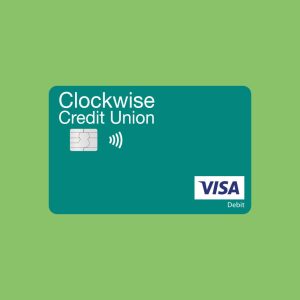Pocket money has long been a part of growing up, giving children their first taste of independence and responsibility while teaching them the value of money. In 2025, changing habits, digital payments, and new financial tools are reshaping how families approach it. Many parents are now asking the same questions: how much pocket money is normal, and what’s the best way to give it?
Understanding the latest trends can make it easier to decide what works best for your family.

How Much Pocket Money Do Kids Get by Age?
The amount of pocket money children receive can vary widely depending on family budgets, expectations, and location. Still, averages provide a useful benchmark.
- Ages 5-7: At this stage, pocket money is often symbolic. Kids may receive around £2-£3 per week, usually in cash, to buy small treats or toys. The focus is less on the amount and more on introducing the concept of handling money.
- Ages 8-10: By this age, children are ready for slightly larger sums. The UK average is £4-£5 per week. This is typically linked to small responsibilities, such as helping with chores, tidying their room, or walking the dog.
- Ages 11-13: Pre-teens begin to want more independence, especially with school lunches, outings with friends, or saving for games. Average pocket money rises to £7-£9 per week. Some families increase it monthly rather than weekly at this point, encouraging children to budget for longer periods.
- Ages 14-16: Teenagers often need more money for social activities, clothes, and tech. They may receive £10-£15 per week, or around £40-£60 monthly. Many parents start linking allowances to clear expectations, like helping at home or maintaining good school habits.
- Ages 17-18: Older teens preparing for adulthood may receive £70-£100 monthly, depending on whether they have part-time jobs. At this stage, pocket money often shifts into a contribution for essentials like travel, phone credit, or lunches.
These figures are averages, not rules. Some families choose to give more, some less. What matters most is consistency, clear communication, and ensuring pocket money aligns with your values around money.
Should Pocket Money Be Cash or a Debit Card?

For generations, pocket money meant coins in a jar or notes slipped into a wallet. But as the world becomes increasingly cashless, many parents are considering debit cards for their children.
Cards come with several advantages:
- Practicality: Children can use cards in shops, online, and for contactless payments.
- Security: Lost cash is gone forever, but a card can be frozen if misplaced.
- Tracking: Parents can see spending instantly, helping with conversations about budgeting and responsibility.
- Preparation: Most adult payments are digital. Learning to manage a card early helps children feel confident when they transition to adulthood.
Still, cash shouldn’t be ruled out entirely. Younger children, in particular, often learn best by physically handling money. Many families strike a balance, starting with coins and notes, then moving to a debit card around age 10-12 when children are ready for more responsibility.
Should Pocket Money Be Linked to Chores?

For many families, pocket money is more than a weekly allowance. It is a way to teach lessons about work, effort, and responsibility, which is why parents often link it to chores as a reward for effort. However, some argue it should be kept separate so children learn to contribute without expecting payment.
Pros of linking pocket money to chores:
- Teaches that money is earned through effort
- Encourages responsibility and independence
- Gives children a sense of achievement when they contribute
Cons of linking pocket money to chores:
- Household tasks are part of family life and should not always be paid for
- Can make family life feel transactional
- Risks of children refusing to help unless money is offered
A balanced approach works for many parents: giving a base allowance but offering extra for bigger jobs like babysitting or mowing the lawn. This way, children see both sides: money as a reward for effort and responsibility as a shared part of family life.
Teaching Financial Skills Through Pocket Money
Pocket money gives children their first experience of managing money and making choices. Used well, it can build lifelong habits like saving, budgeting, and generosity, helping children grow more confident as they get older.
- Saving: Encourage children to set aside part of their pocket money for bigger purchases. Some families use a “split system” where money is divided into spending, saving, and giving, which helps children think beyond instant rewards.
- Budgeting: Moving from weekly to monthly allowances teaches children how to plan ahead and manage a larger sum over time, rather than spending everything straight away.
- Smart spending: Talk with your child about making choices, comparing prices, and avoiding impulse buys. These small conversations help children recognise value and think more carefully about how they spend.
- Generosity: Setting aside a small portion of pocket money for charity or causes they care about encourages empathy and a sense of social responsibility.
These habits, when introduced early, can shape how children view money well into adulthood.
Digital Spending and Safety with Clockwise Credit Union
Image: Kids Using a Laptop | Freepik
Pocket money in 2025 often extends beyond coins and notes. Many of the things children enjoy, from games and apps to streaming services, now require digital payments. This shift means parents are not only deciding how much pocket money to give, but also how to manage it in a world where spending is increasingly online. The challenge is finding a balance between giving children independence and keeping their money habits safe and under control.
Virtual debit cards offer a practical way forward. They work like traditional debit cards but exist entirely online, allowing parents to set spending limits, track transactions in real time, and create or cancel cards instantly. For children, it offers hands-on digital money management, while giving parents peace of mind and an easy way to guide responsible habits.
For families ready to take that next step, Clockwise Credit Union makes it easy to introduce safe and structured online spending. Combining the tradition of pocket money with modern tools like virtual debit cards helps children develop the confidence and skills to manage money wisely in a digital world.
Conclusion: Adapting Pocket Money for the Modern Age
Pocket money is evolving with new technology and financial tools. Whether parents opt for cash, debit cards, or a mix, consistency and communication remain key. With services like Clockwise Credit Union offering virtual debit cards, parents can help their children navigate digital spending while ensuring financial safety.
This balance of tradition and innovation fosters essential money management skills for a successful future.





